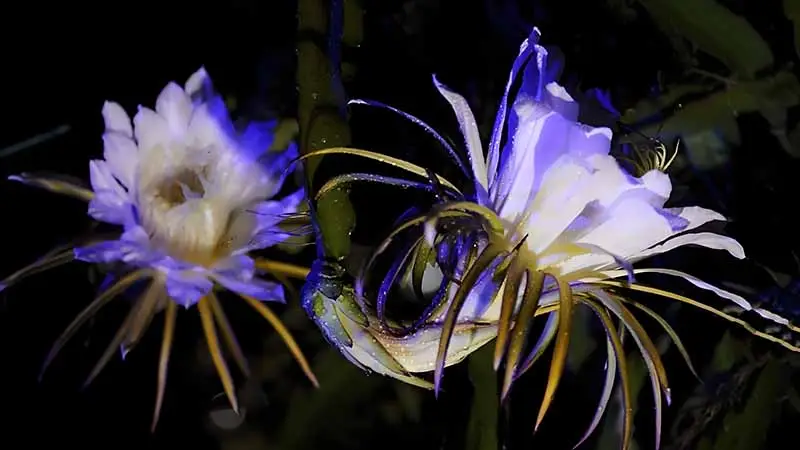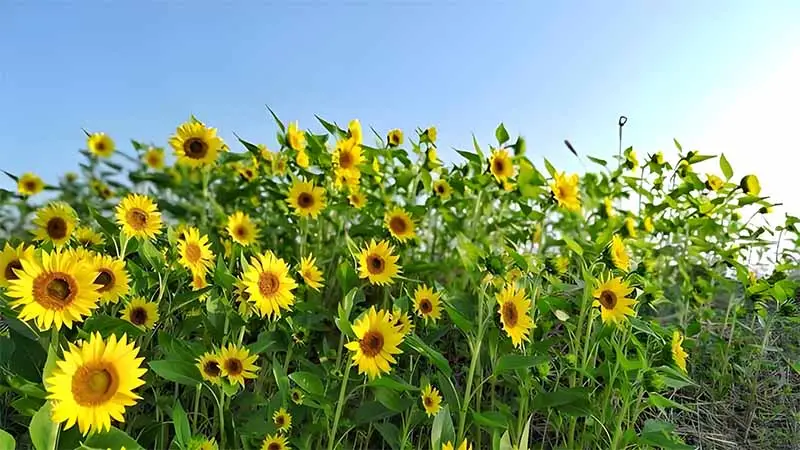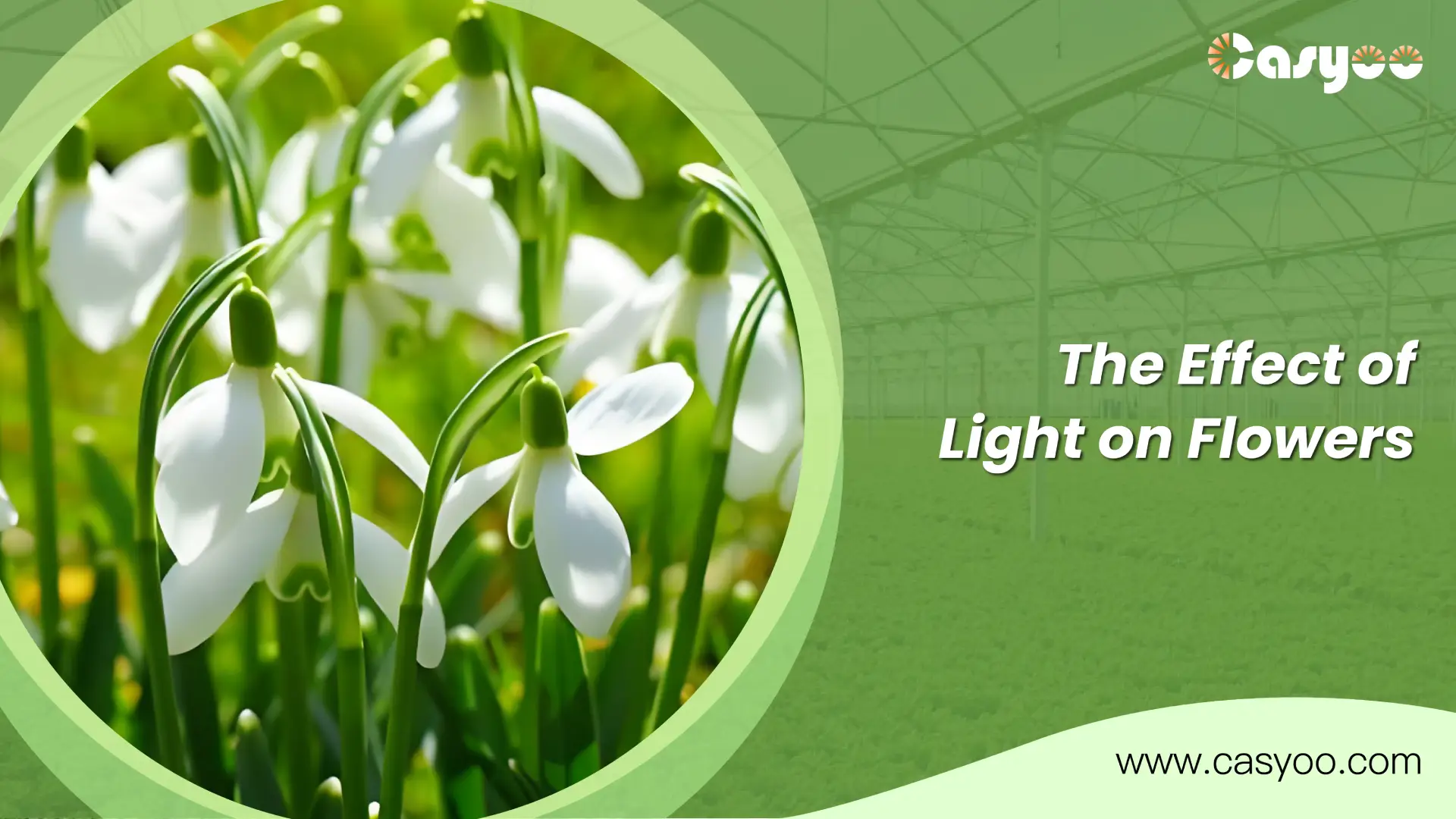Light is one of the important factors affecting the growth and development of flowers. It is a necessary condition for the survival of green plants and the source of plant life. If there is a lack of light in the growth of plants, they cannot carry out photosynthesis. Without photosynthesis, the growth of plants will lack some necessary substances and energy, and the plants will wither or even die. Light can regulate the growth of plants and also affect the growth and development of flowers. Next, we will analyze in detail the effect of light on flowers.
The Effect of Light Intensity on Flowers
The light intensity in different geographical locations is constantly changing, and it is influenced by factors such as latitude, longitude, altitude, and nearby terrain. Plants and flowers grown in different environments have varying requirements for light intensity, with some requiring strong light and others requiring weak light. Below, we will discuss the effect of light on different flowers in a categorized manner.
- Positive Flowers
All positive flowers require sufficient light, they prefer strong light, and they can grow and develop normally under the entire lighting conditions. If there is insufficient sunlight, it is easy to cause the softness and thinness of branches and leaves to turn yellow, making it difficult or difficult to bloom. The positive flowers planted in long-term user households include Yuejie, pomegranate, plum blossom, magnolia, nine spice, fig, and so on. There are also a few positive flowers in the foliage, such as cycad and poinsettia. Most aquatic flowers, cacti, and succulents are also positive flowers, such as cactus, aloe vera, lotus, and half branch lotus. Indoor cultivation of such plants generally requires high-power LED plant lights for supplementary lighting.
- Negative Flowers
This type of flower requires less light and cannot grow in strong light environments. It prefers to grow in diffuse light environments, and about 50% shading is sufficient. If these flowers are exposed to strong light for a long time, their branches and leaves will quickly turn yellow, grow slowly or stop, stagnate, or even die. Some ornamental flowers belong to this category, such as wenzhu, camellias, jade hairpin, green ivy, evergreen, ivy, big rock paulownia, turtle bamboo, crabapple, etc. There are also ferns and orchids.
- Neutral Flowers
This type of flower does not like strong light. Under strong light, the flowers will stop growing, and prolonged exposure to strong light can burn them out. The light for neutral flowers should not be too weak, as too weak light can cause the flowers to wither. Common neutral flowers include Clivia, chlorophytum comosum, Hibiscus, Crab Claw, Calla, Carnation, Hibiscus, etc.

The Effect of Light Duration on Flowers
In the natural environment, different regions receive varying amounts of light, especially in high-dimensional areas where the light duration is shorter in winter and longer in summer. Flowers grown in different regions also have different durations of adaptation to light. Let’s discuss the effect of light duration on different flowers in a classified manner.
- Flowers with long exposure to light. There are usually many flowers under the long sunshine. They are positive flowers, such as jasmine, pomegranate, lotus, Impatiens, etc. Windbell grass and some neutral flowers, such as purple. Roland plants. These flowers take 12 hours a day, and only when they reach this length can they form flower buds and bloom normally.

- Flowers with short light exposure time. In some autumn and winter seasons, most of the flowers that bloom are short day flowers, such as a bunch of red flowers and a magenta, chrysanthemums, hydrangeas, crab claw orchids, etc. This type of spending requires less than 12 hours of sunlight per day. They often grow but do not bloom in environments with long daylight hours in summer. Flowers will bloom in autumn when the sunshine is less than 12 hours. If the developmental period is only 8-12 hours per day, accelerate their development and flower earlier. Its origin is mainly tropical and subtropical.
- Flowers exposed to daily light. Such as roses, cycads, water lilies, geraniums, etc. The blooming of this flower is not related to the intensity of light, as long as the temperature is suitable, the flowers can bloom in all seasons of the year.
The Effect of Light Color on Flowers
- The impact of red light on plants
Red light is one of the important light sources for plant photosynthesis. Red light can promote plant elongation and increase sugar accumulation in leaves, which is beneficial for plant growth and development.
- The impact of blue light on plants
Blue light plays an important role in photosynthesis and protein synthesis in plants. Blue light can promote the movement of chloroplasts and the opening and closing of stomata, which helps with photosynthesis and nutrient absorption in plants.
- The impact of green light on plants
Green light can penetrate leaves under strong white light, increasing photosynthesis in the lower chloroplasts. However, green light has a relatively small promoting effect on plant growth and mainly affects photosynthesis.
- The impact of yellow and purple light on plants
Yellow and purple light are both important photosynthetically active radiations that can enhance the photosynthetic capacity and nutritional quality of plants. Purple light can also delay plant aging and increase the activity of antioxidant enzymes.
- The specific effects of different colored light on plant growth
Red and blue light play important roles in photosynthesis and growth and development of plants. Red light promotes elongation growth and sugar accumulation, while blue light promotes protein synthesis and stomatal opening and closing. Green light mainly affects photosynthesis, while yellow and purple light improve nutritional quality and delay aging.
Summary
The effect of light on the growth of flowering plants can not only affect their growth through metabolic processes, but also have a direct impact on plant organ differentiation and morphology by inhibiting cell growth and promoting cell differentiation. The direct impact of light on the morphological construction of flowering plants is called phototype effect. Light is a necessary condition for the normal growth of flowering plants, and the main factors affecting their growth are light intensity, light wavelength, and light duration. Light plays a particularly important role in the growth and development of flowering plants, affecting almost all stages of plant growth. The role of light on flowers and plants is mainly manifested in two aspects:
- it provides radiation energy for plant photosynthesis.
- It is a signal that regulates many physiological processes throughout the entire life cycle of plants.
In short, light is the foundation. Without light, more fertilizer, water, and suitable temperature, it is useless because flowers and plants cannot grow and develop normally. Flower plants can only undergo photosynthesis under light conditions, and only photosynthesis can synthesize various organic substances required for the growth of flower plants. Visible light is as important for plants as it is for us humans to eat. Without light, life activities such as chlorophyll synthesis, anthocyanin formation, water absorption and transpiration, and cytoplasmic flow cannot occur.




